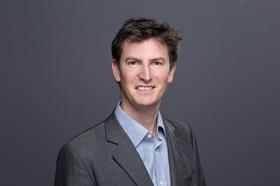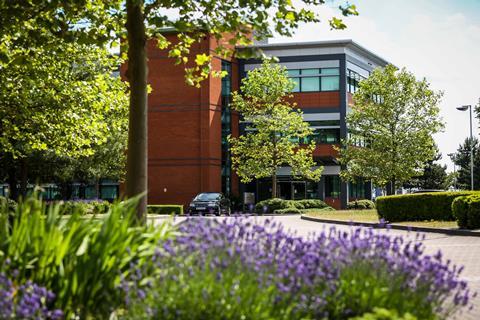Generational shifts, changing working patterns and technological innovation have always shaped the way we think about buildings and spaces. With these changes however, come winner and losers, with outdated and unadaptable design trends being left behind.

Business parks are potentially in danger of this fate. As large-scale developments, usually outside of towns, the relatively isolated locations of business parks have shifted from being a boon to a burden. Alongside urban renaissance and garden city narratives, business parks’ lack of speed to adapt has opened the door to the growth of alternative models such as inner-city tech business districts.
However, while recent trends have favoured urban clusters, there is a considerable advantage that business parks have over their competitors: flexibility. Unlike the complexity of historic inner-city locations, business parks have the capacity to easily redevelop their infrastructure and repurpose their buildings to accommodate new business models and economic trends.
It is this capability for potential adaptation and flexibility that business parks need to turn to. Innovation districts in city centres will maintain their appeal thanks to their centrality in the exchange between people, knowledge and ideas. However, dramatic rent rises for urban commercial spaces, complex planning and construction, and a lack of available space for fast growing companies may signal a way for out-of-town business parks to flourish once again.
Additionally, with start-ups constituting an ever more important contributor to economic activity, business parks can offer reasonably priced office rents and amenities to attract the younger workforce. Green spaces, investment in the development of transport links and lower occupancy costs are only a couple of the business park features that are appealing to the start-up business model.
However, not all business parks are the same, and they should not all follow the same blueprint. Our recent research with the British Council for Offices (BCO) reveals that there are three broad scenarios for the future of business parks, which would appeal to companies looking for strategic clustering: closer alignment with higher education; more mixed-use developments and greater accessibility; and a closer alignment with proximal international and regional airports.

Firstly, existing companies within a business park want to attract the brightest and best talent. Closer alignment to a local university allows companies to work in proximity with researchers and students, embedding educational institutions within their working spaces, and creating opportunities to share knowledge and develop a pipeline of soon-to-be graduates. Furthermore, business parks can offer incubator and start-up company space for businesses spinning out of universities to grow into. For these companies the business park can provide greater support functions, from training to human resources departments, which can make a real difference for young businesses.
Secondly, business parks that have been overly reliant on car-centric transport will need to evaluate the potential to provide alternative travel choices. They will also have to look to the future of mobility, bridging the gap with a young demographic less interested in owning a car than their parents. However, for some locations this will not be enough. More radical approaches seeking greater integration of mixed-use classes will begin to replicate town centres in an urban model. This will range from the inclusion of hotels and retail, through to residential accommodation, cafes, shops, childcare facilities and even pet care. Parks that focus on amenities and easier accessibility, while benefiting from landscaping and greenery, are likely to prove an attractive prospect.
Thirdly, business parks, in whatever future form they may take, have the ability to head in a trajectory which aligns them more closely with regional and international airports, depending on their proximity to these transport hubs. With personal mobility and the speed of delivery becoming more sophisticated, business parks may begin to see clusters form that are focused on air travel, with business parks in Edinburgh and Birmingham at the fore of this trend.
Alongside our collaboration with the BCO on research exploring the future of business parks, Perkins+Will is currently implementing future trends, through our work on Milton Park’s 2040 masterplan. Located a few miles south of Oxford, the western anchor of the Oxford/Cambridge corridor, Milton Park has access to a steady stream of highly-skilled talent from surrounding research-led universities. While the park already has onsite amenities, travel connections and a dedicated management team, we’re setting out a long-term vision and implementation strategy to increase its resilience and flexibility to future economic trends, while improving the capability of the park to cultivate a community within its boundaries.
Most importantly, what we’re doing at Milton Park can provide a template for other business parks to follow, in order to foster collaborative business ecosystems, create sustainable communities, and have the capability to adapt to the increasing speed of change in science and high-tech industries. The project identifies two key factors benefiting the future of Milton Park: the Local Development Order which allows for simplified planning permission in approximatively ten days from application; and the importance of collaboration and networking at the local economic strategy level, of which OxLEP benefits from being a trailblazer for creating a local industrial strategy.
The research we have conducted with the BCO highlights the huge opportunities available for business parks to innovate, consider future working trends, and be able to adapt to rapidly changing economic environments. With urban centres being challenged by historic complexity and slow planning processes, there is still a clear role for business parks to be central to future growth in the UK.






























No comments yet